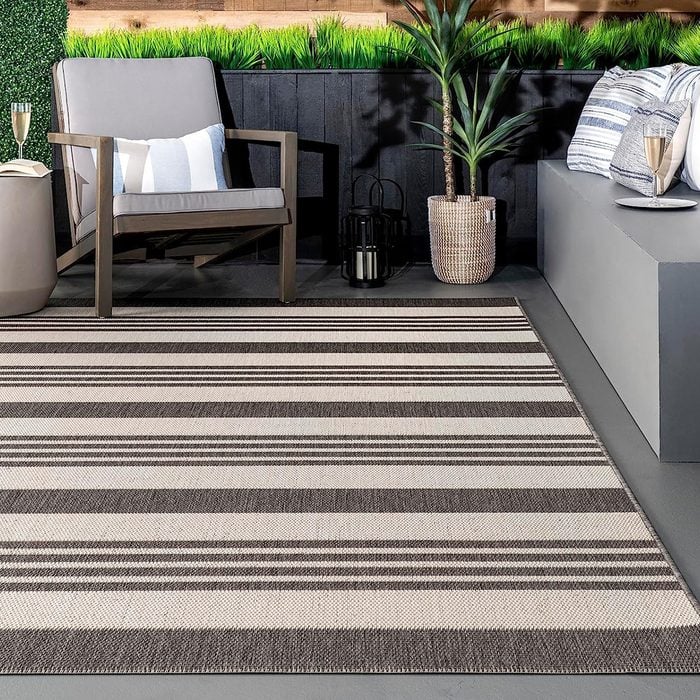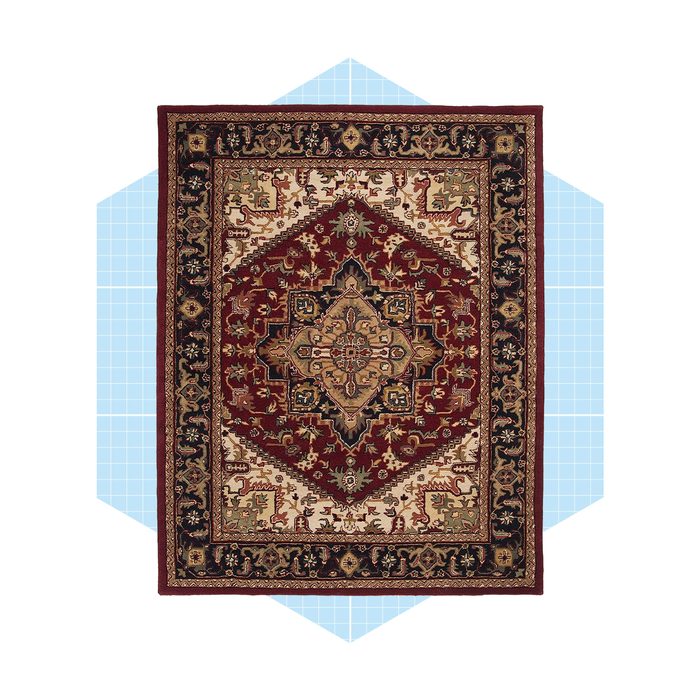
Wool
There’s a reason wool rugs have been around for centuries. “We love wool for its softness, longevity and versatility,” Peterson says. “Shag, cut pile, flat weave — wool can be handled in so many ways for different aesthetics and price points.”
This sustainable, stain-resistant natural fiber is one of the most durable options available. If you look after it properly, a quality wool rug can last a lifetime, even in high-traffic rooms. Peterson also loves that wool rugs clean up beautifully and take dyes well.
However, a wool rug might not be the best area rug choice for buyers on a budget. They tend to be more expensive than synthetic fiber options, especially when hand woven. And be prepared to pull the vacuum out often, because new wool rugs are prone to shedding. Find out the difference between a carpet and a rug.
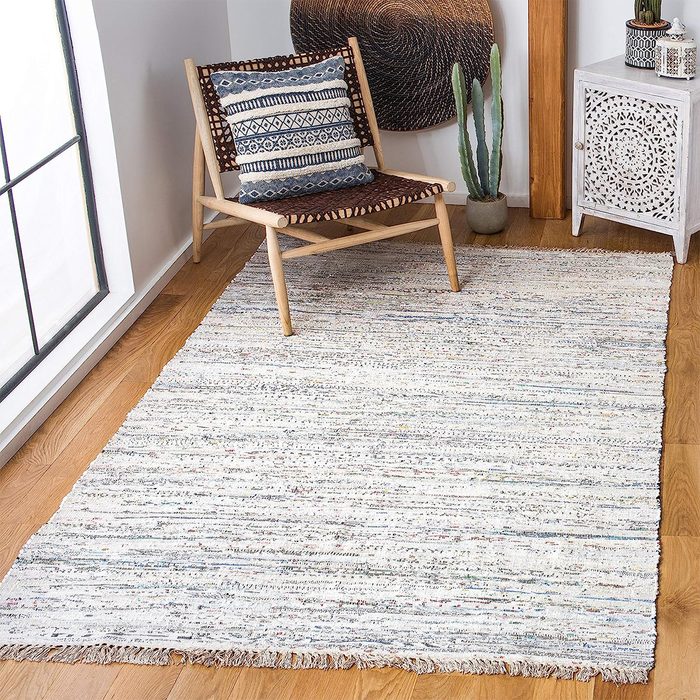
Cotton
Cotton is another classic rug material, a natural fiber that’s more affordable than wool. A big bonus: Cotton rugs are really easy to clean. Simply toss them in the washer if they fit. Some of the best kitchen rugs are cotton.
Cotton is soft, durable and offers an informal vibe, but colors can fade quickly. If you don’t like the washed-out look, you’ll need to replace a cotton rug more frequently than a wool one. And be aware cotton isn’t as stain resistant as some materials.
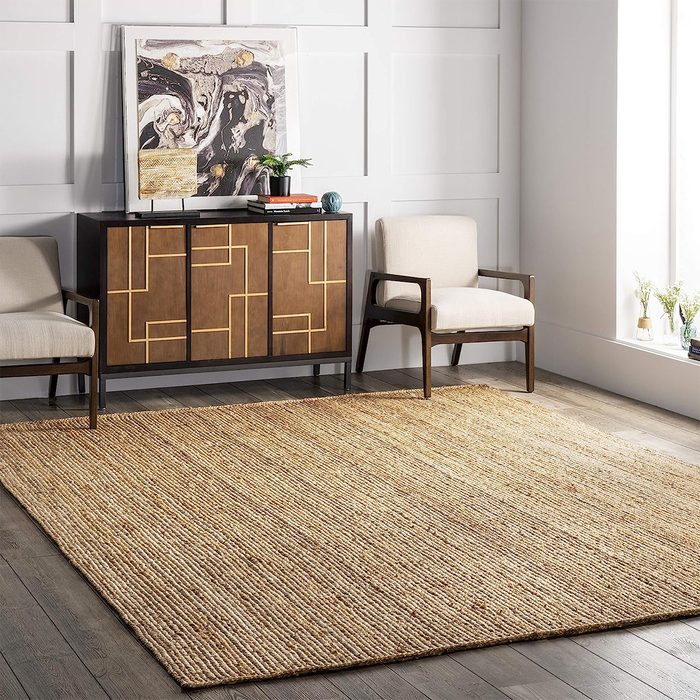
Jute
Eco-friendly jute rugs and others made from natural plant fibers like sisal, seagrass and bamboo are synonymous with casual coastal designs. And these textural materials are surprisingly versatile. Peterson loves jute because it “has a rough organic quality, but can also have some sheen to the fiber, like silk.”
Jute rugs aren’t as durable or forgiving as wool. And they suck up moisture, making them prone to mold and mildew. These rugs aren’t a good choice for damp bathrooms or covered patios or porches, unless they come with a water-repellent treatment.
And be careful how you clean area rugs made from jute. Blot up stains quickly to save them from absorbing into the material, and vacuum on a low setting to minimize damage to the fibers.
Seagrass is more durable and stain resistant than jute, but it comes with a higher price tag.
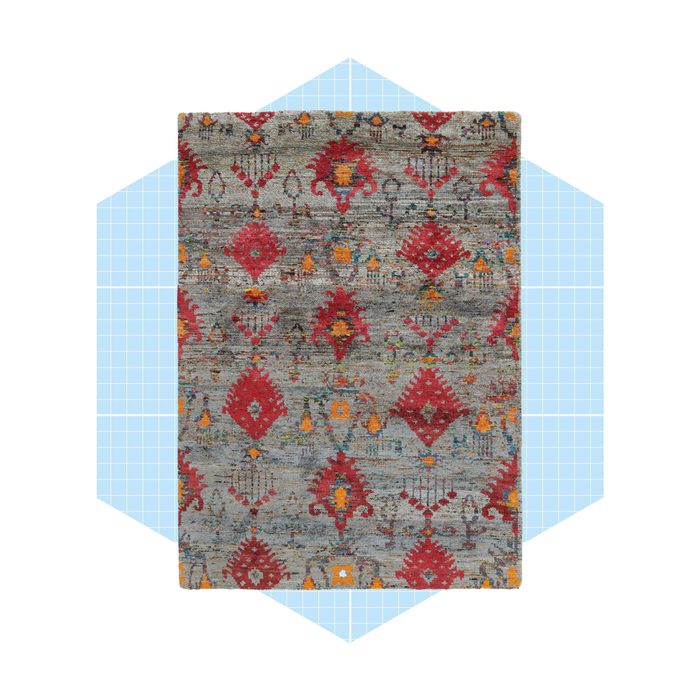
Silk
If you want a look that screams elegant luxury, look no further than a delicate, statement-making silk rug. This sustainable fabric takes colors well, so vivid shades and patterns are common. Just be ready for the equally luxurious price tag.
Peterson loves soft silk for its sheen, but points out upkeep is harder, and eventually it will show sun damage. Silk rugs require regular professional cleaning and don’t wear well. That means they’re best suited for low traffic, lower light spaces.
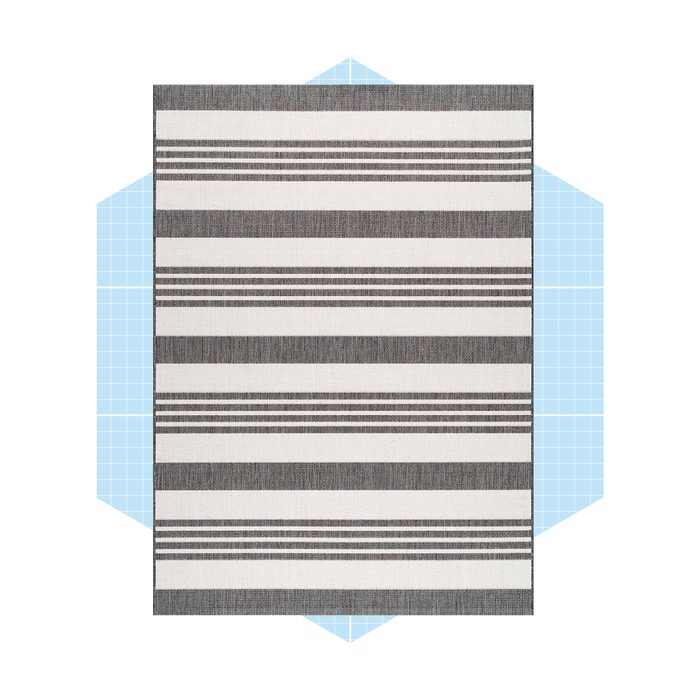
Synthetic Fibers
When you’re looking for a budget-friendly, practical rug, consider one made from synthetic fibers. Common materials include nylon, viscose, acrylic and polypropylene.
Synthetic fiber rugs are some of the best for outdoor spaces, high-traffic rooms and pet owners working on potty training. They’re easy to hose down or, if small enough, pop in the washing machine. These are a perfect solution if you’re looking for outdoor rugs for wood decks.
Polypropylene rugs are widely available. This stain-resistant, tough material is colorfast, resists mold and mildew and won’t fade in the sun. However, Peterson recommends caution when deciding.
“Polypropylene rugs that try to look like traditional wool rugs generally end up looking fake,” she says. “A better option is something braided or woven in a chunky texture.”
And if you’re looking for an environmentally-friendly rug, it’s best to skip those made from synthetic fibers.
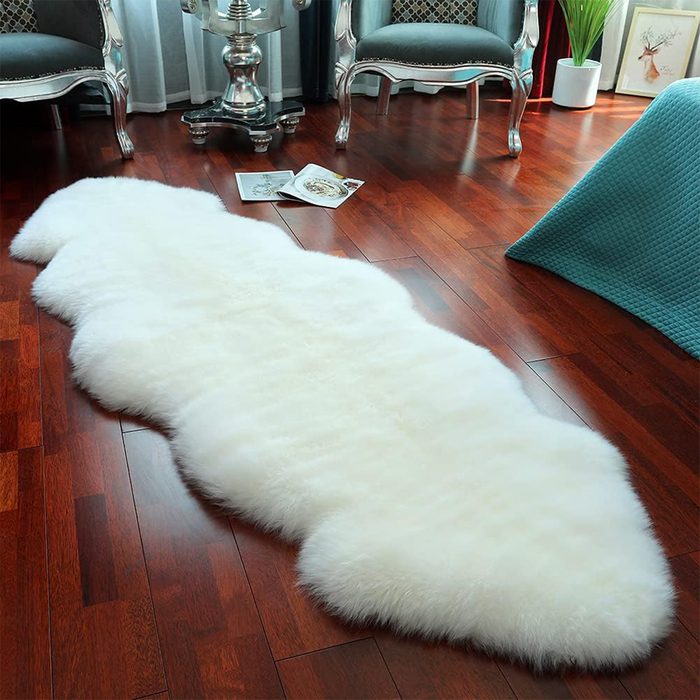
Hide and Faux Hide
Hide and sheepskin rugs are having a design renaissance. They’re popular for adding layers of textural interest in cozy, small spaces.
While these irregular-shaped rugs are tough, they don’t cope well with excess moisture. Mop up any spills, pronto, to avoid unsightly stretching. And to prevent bald patches from forming, don’t use the beater bar on your vacuum. Here are some tricks on how to get creases out of rugs!
If you want the hide look without the hefty price tag, there are plenty of faux hide rugs to choose from. Faux hide is also a great animal-friendly option. Just don’t expect this type to last as long as the real deal.
Next: Discover tips to get rug under bed.

